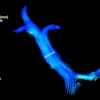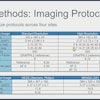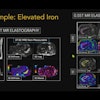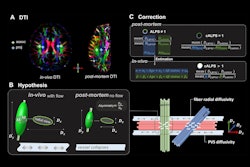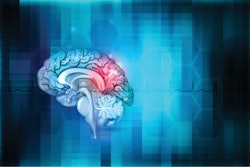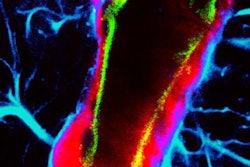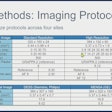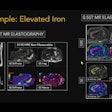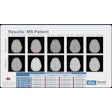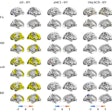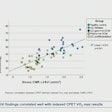MRI has revealed that dysfunction in the brain’s glymphatic system accelerates brain aging in patients with ischemic stroke, according to research to be presented May 13 at the International Society for Magnetic Resonance in Medicine (ISMRM) 2025 meeting in Honolulu.
The finding offers a new perspective for in-depth studies on the role of the glymphatic system in neurological diseases and provides strong evidence for the development of treatment strategies, noted study lead Yuanhao Li, MD, of Tongji Medical College in Wuhan, China.
“These findings provide a foundation for further exploration of the relationship between glymphatic system dysfunction, ischemic brain injury, and brain aging, while also revealing potential therapeutic targets,” Li and colleagues wrote.
The glymphatic system is a recently discovered pathway in the brain that helps clear metabolic waste and other substances from brain tissue. Glymphatic system dysfunction, where the system is impaired, has been linked to various neurological disorders, as well as to brain aging after stroke, the researchers explained.
Yet the impact of early glymphatic dysfunction on brain aging remains unclear, the group noted. To address the knowledge gap, the researchers investigated connections between impaired glymphatic system function and accelerated brain aging in patients within one week after stroke.
The group recruited 60 stroke patients and 68 healthy controls. Participants underwent MRI and clinical evaluations to analyze glymphatic metrics and brain age differences.
According to the analysis, stroke patients exhibited decreased whole-brain blood flow, accelerated brain aging, and glymphatic dysfunction when compared to healthy controls, the researchers reported.
 Representative T2-FLAIR, CBF maps, choroid plexus segment, free-water maps, ALPS ROI, and 3D T1BRAVO from a stroke patient, and a healthy control. Both individuals are 64 years old in chronological age. The patient displays an evident ischemic lesion in the basal ganglia region on T2-FLAIR imaging. The distinctions between the patient and the healthy control are as follows: CBF (32.22 ml/100g/min vs. 47.70 ml/100g/min), CPVF (1.47 vs. 0.84), VCSFVF (32.50 vs. 11.00), MSFW (0.0455 vs. 0.0313), ALPS (1.04 vs. 1.54), and BPAD (13.21 vs. -1.60).Yuanhao Li, MD, and ISMRM
Representative T2-FLAIR, CBF maps, choroid plexus segment, free-water maps, ALPS ROI, and 3D T1BRAVO from a stroke patient, and a healthy control. Both individuals are 64 years old in chronological age. The patient displays an evident ischemic lesion in the basal ganglia region on T2-FLAIR imaging. The distinctions between the patient and the healthy control are as follows: CBF (32.22 ml/100g/min vs. 47.70 ml/100g/min), CPVF (1.47 vs. 0.84), VCSFVF (32.50 vs. 11.00), MSFW (0.0455 vs. 0.0313), ALPS (1.04 vs. 1.54), and BPAD (13.21 vs. -1.60).Yuanhao Li, MD, and ISMRM
This was characterized by lower global cerebral blood flow based on pulse-arterial spin labeling, higher brain‐predicted age difference (BPAD, calculated as corrected brain age minus chronological age), as well as higher choroid plexus volume fraction, ventricle cerebrospinal fluid volume fraction, mean skeletonized free water, and lower fluid dynamics on diffusion tensor imaging along perivascular spaces (DTI-ALPS) (p < 0.05).
Further, correlations were observed among these glymphatic alterations, all of which were associated with BPAD (p < 0.05). A mediation analysis identified ventricle cerebrospinal fluid volume fraction, mean ALPS index, and mean skeletonized free water as key contributors to BPAD (p < 0.05). Moreover, higher BPAD was associated with more severe neurologic dysfunction (p < 0.05), according to the results.
“The reduction in global cerebral blood flow and damage to the glymphatic system play a key role in the accelerated brain aging observed in the early stages of stroke. Additionally, the increase in brain age is closely associated with neurological impairment,” the group wrote.
The study offers a new perspective on the role of the glymphatic system in neurological diseases and provides strong evidence for timely clinical interventions and the development of treatment strategies in the future, the researchers concluded.
Check out AuntMinnie.com’s full coverage of ISMRM 2025 here.
